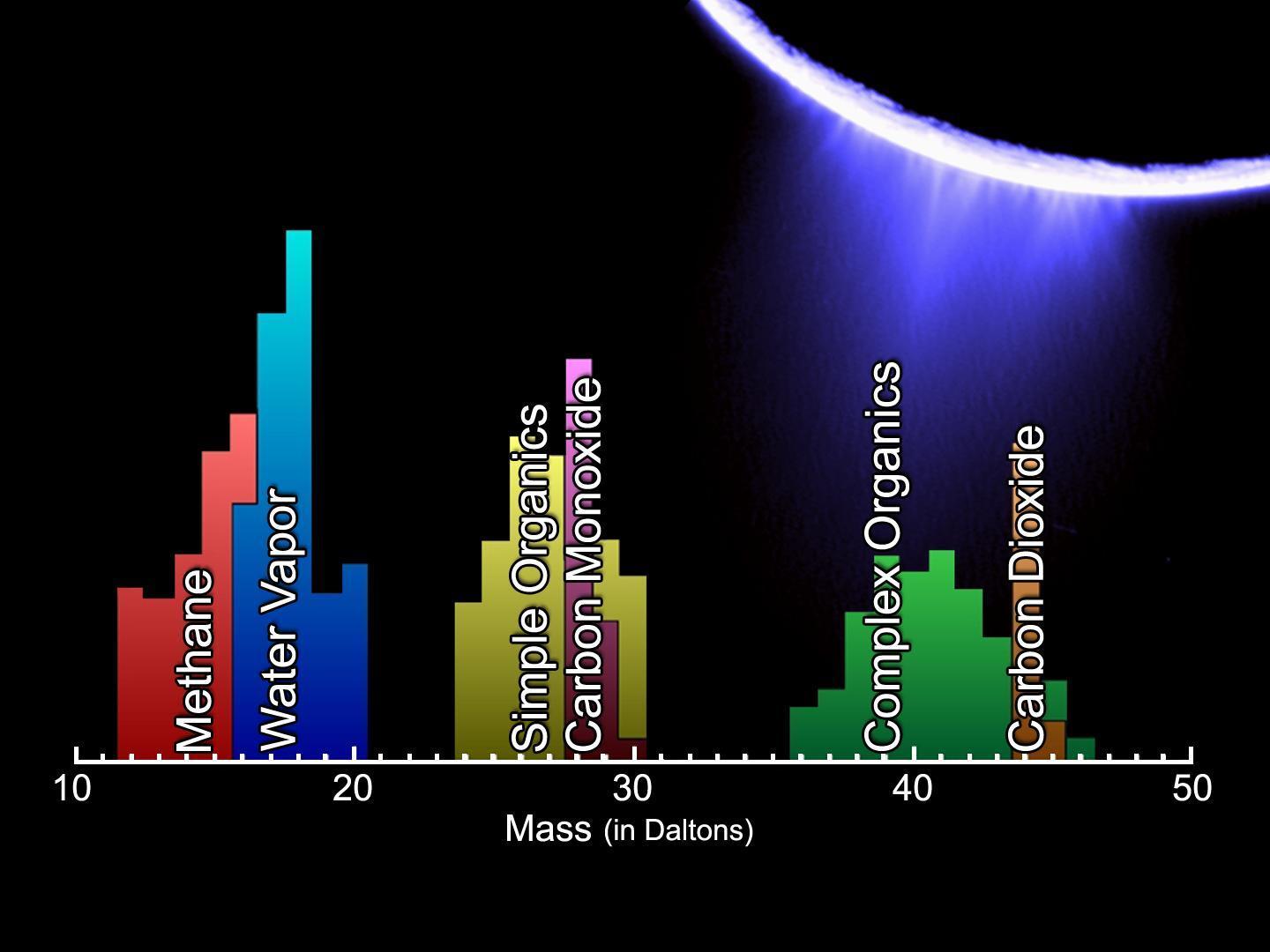
The lower panel is a mass spectrum that shows the chemical constituents sampled in Enceladus' plume by Cassini's Ion and Neutral Mass Spectrometer during its fly-through of the plume on Mar. 12, 2008. Shown are the amounts, in atomic mass per elementary charge (Daltons [Da]), of water vapor, methane, carbon monoxide, carbon dioxide, simple organics and complex organics identified in the plume.
How It Worked
The Ion and Neutral Mass Spectrometer, or INMS, was capable of determining the chemical, elemental and isotopic composition of the gaseous and volatile components of the neutral particles and the low energy ions in Titan's atmosphere and ionosphere, Saturn's magnetosphere, and the ring environment.
How We Used It
The instrument collected data to determine the composition and structure of positive ions and neutral particles in the upper atmosphere of Titan and the magnetosphere of Saturn. It also measured the positive ion and neutral environments of Saturn's rings and icy moons.
At a Glance
- Mass (current best estimate) = 9.25 kg
- Average Operating Power (current best estimate) = 27.70 W
- Average Data Rate (current best estimate) = 1.50 kilobits/s
For more information, read the engineering technical write-up.


